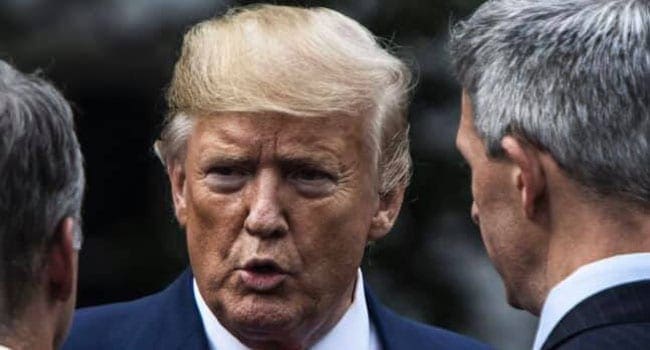 Is American President Donald Trump beating war drums in the Middle East to prop up the ailing crude oil industry?
Is American President Donald Trump beating war drums in the Middle East to prop up the ailing crude oil industry?
After having failed to turn around the oil markets by engineering an unprecedented output cut deal between Saudi Arabia and Russia, Trump seems to be looking desperately at other options.
The crude oil industry is in the doldrums around the world.
And United States operators have started shutting wells and halting drilling. Those steps could cut American output by 20 per cent and leave thousands of workers unemployed.
Some 1.75 million barrels per day (bpd) of American production could be immediately shut down. And analyst IHS Markit Ltd. projects that the number of new wells brought online will plunge by almost 90 per cent by the end of the year.
Trump can’t let this continue. He needs to do something to boost his electoral fortunes, with the presidential election looming in November.
As Rabobank analysts say, simmering tensions represent “perhaps the oldest Middle East oil trick in the book: you want higher oil prices, threaten to start breaking things.”
Trump seems ready to take the route. Last week, he tweeted that he ordered the U.S. Navy to “shoot down and destroy” Iranian gunboats if they harass U.S. ships.
A week ago, 11 Iranian patrol boats reportedly made some “dangerous and harassing” manoeuvres near U.S. warships, passing within 10 metres of a U.S. vessel. After badgering the U.S. ships for around an hour, the Iranian boats left the scene.
This wasn’t something completely out of the ordinary. Iran has had tense encounters for years with the U.S. Navy in the Persian Gulf and the Strait of Hormuz. But generally, the small Iranian patrol boats sail away after being warned by the U.S. warships.
This time, however, Trump reacted firmly, apparently compelled by domestic issues.
Iran isn’t likely to back down as a result of the president’s warning. The leader of Iran’s Revolutionary Guard warned Thursday, after Trump’s tweet, that he has ordered his forces to target U.S. Navy vessels as necessary.
And in another show of defiance on Wednesday, Iran launched its first military satellite, unveiling a previously secret space program.
Oil prices rallied after all this posturing – somewhat. But that may not last long.
Tensions in the Strait of Hormuz, the world’s leading shipping lane for crude oil, continue to play a role in the price of crude, albeit a diminishing one.
The attack on the state-owned Abqaiq oil production facility in Saudi Arabia last September triggered a 20 per cent price jump in the Brent crude oil. And the assassination in January of Iran’s top general, Qassem Soleimani, spiked prices as it seemed to put the region on the brink of war.
However, those price jumps didn’t last long, wrote industry observer and journalist Tom Kool.
Now, a massive supply glut brought on by the COVID-19 pandemic and a worldwide shortage of storage space has touched off a relentless market rout that has shifted the entire curve for oil. This won’t change overnight.
“The only way you’re going to balance this market is for prices to go to levels to get supplies to shut,” Amrita Sen, chief oil analyst at consultant Energy Aspects Ltd., said in an interview on Bloomberg Radio. “We’ve been calling for $10 Brent for a while and we’ve absolutely looked at single-digit prices.”
There are signs that low prices are here to stay as supply dwarfs demand. With storage filling at an “unprecedented pace,” traditional oil bull Pierre Andurand warns that crude could tumble below zero again.
Paul Sankey of Mizuho Securities warned that negative oil prices were possible a month ago. He now says the West Texas Intermediate crude futures price could crash to as low as a -$100 per barrel next month.
Trump’s tweet targeting Iran may have distracted attention briefly. But fundamentals, not posturing, drive the markets. And they are extremely weak right now.
Toronto-based Rashid Husain Syed is a respected energy and political analyst. The Middle East is his area of focus. As well as writing for major local and global newspapers, Rashid is also a regular speaker at major international conferences. He has been asked to provide his perspective on global energy issues by both the Department of Energy in Washington and the International Energy Agency in Paris.
The views, opinions and positions expressed by columnists and contributors are the author’s alone. They do not inherently or expressly reflect the views, opinions and/or positions of our publication.

